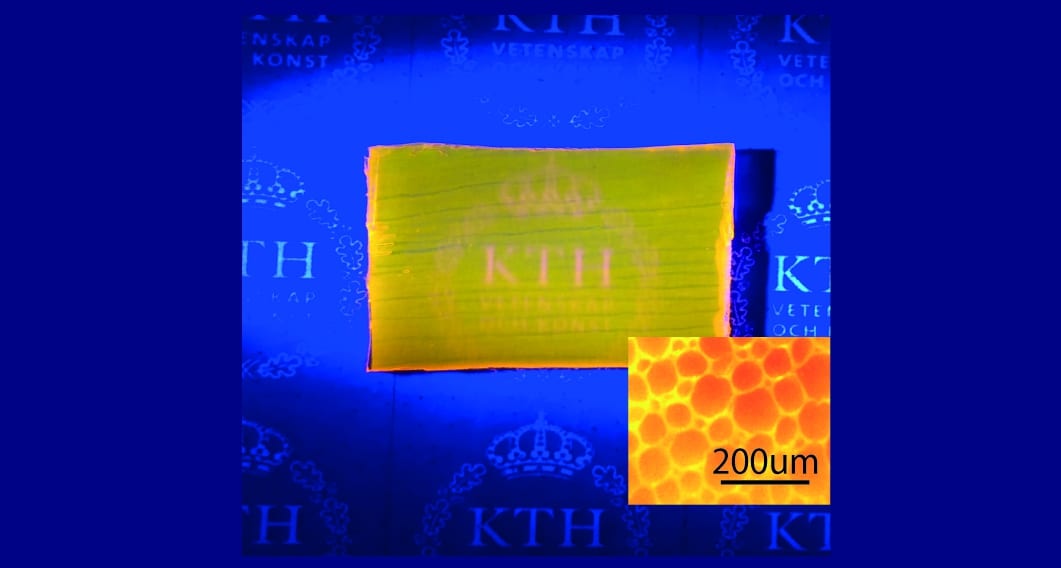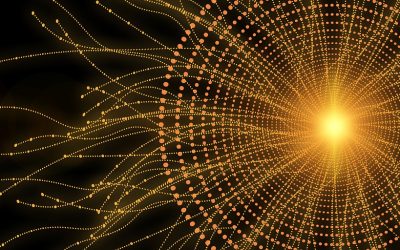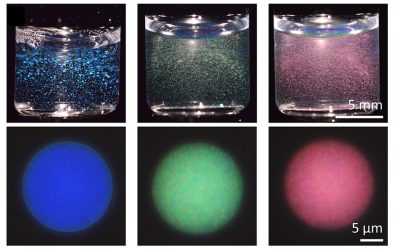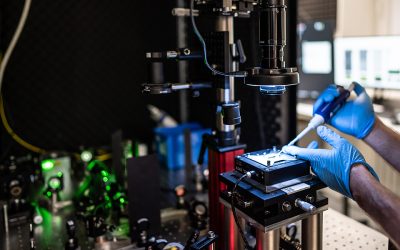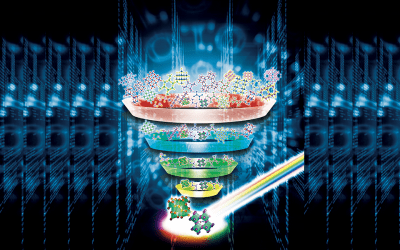Recent development in the chemical technology of wood treatment has enabled the possibility of creating transparent wood, which is a fascinating material with a large potential for applications in optics and photonics. One of the most exciting ideas is the use of such material to design an entirely organic laser.
Indeed, a piece of a transparent wood with proper additives can generate laser radiation. Dye integration into a transparent wood matrix is a key process in creating a transparent wood material capable of lasing. An organic dye, for example Rh6G, is of special interest as an active medium due to its broadband emission/absorption spectra and very high optical gain.
The newly developed transparent wood-dye material, presented by Elena Vasileva an co-workers in Advanced Optical Materials, features structural anisotropy introduced by aligned hollow cells of cellulose fibers. A comparative analysis of the transparent-wood-dye material with traditional polymer-dye substances reveals that lasing is assisted by the presence of the cellulose fibers. In particular, these fibers operate as tiny resonators, which in combination with optical gain media (organic dye) are responsible for laser light generation, which is a collective effect. The output emission spectrum is broadened up to several nanometers in comparison with typical subnanometer spectral linewidth featured by “traditional” lasers. The main reason for spectral broadening is the properties of the naturally formed resonators/fibers – different sizes and relatively low efficiency (Q-factor).
The developed material (TW-dye) has not only unique nature, but also possesses fascinating optical properties owing to components used for its fabrication. The suggested technology can be also implemented in different interdisciplinary areas, e.g., biophysics or environment friendly and sustainable illumination.

